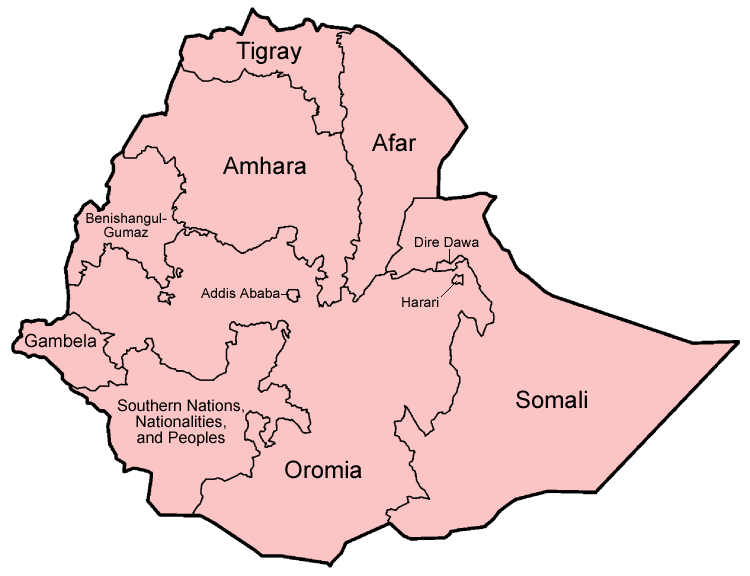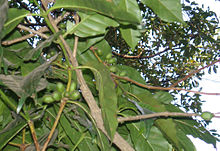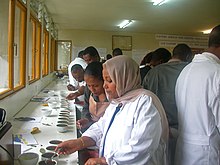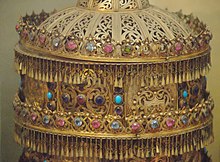Africa
is a very diverse continent. It is the second most populated continent in the
world with about 1.1 billion people residing on the land. Africa is also one of
the oldest populated areas in the world. The continent of Africa has 54
different counties within its borders. There are 2,000 different recognizable languages
spoken in the country. Africa however, is the world poorest and most
underdeveloped counties in the world. Disease is very common in this country as
well, over 25 million people are HIV positive. And over 17 million have already
died from the disease. Malaria is also a known killer in Africa. 90% of all
malaria cases are from Africa and it accounts for 24% of children’s death. The
average life span for a person living in Africa is appropriately 51 years old. Schools are very scares in this area. 40% of
all adults are illiterate and most of those being woman. Africa is the hottest
and the second driest continent in the world. It holds the largest desert in
the world and it is even bigger than the whole United State together. That
desert is called the Sahara Desert. Since most of the continent is dry Deseret
over 90% of the land is not suited for agriculture. Some areas get absolutely no
ran and some get rain none stop. Appropriately 240 people in Africa suffer from
malnourishment. For the remainder of this paper I am going to focus on just one
of Africa’s 54 countries: Ethiopia. Ethiopia has strong religious history in
which the country is founded on. It also has music and art history as well
natural resources and trade.
Ethiopia is the second most
populated country in Africa with a population of about 100 million people. The
largest city in Ethiopia which is also the capital is Addis Ababa, whom plays
in important role in Ethiopian history. The weather is Ethiopia is typically
mild in a very tropical climate. The average temperatures range from 68 degrees
to 85 dresses. They do not have set seasons like we do here in the United
States. There seasons are largely defined by how much rainfall they get.
October to February is a pretty dry season. Then in march begins a light rainy
season and goes until may. Then the heavy rain starts in June going till September.
The country has a high central plateau and mountains ranging between 4,000 to
13,000 feet high. The Great Rift Valley splits the plateau in half making the
western high grounds get a lot more rain and the low grounds get very hot, dry
days. Ethiopia has a lot of health problems and most of those health problems
stem from poor sanitation and malnutrition. Of the 100 million residents of Ethiopia,
over 44 million do not have access clean water. The people will drink the dirty
water, even though it makes the sick because they have absolutely no other
alternative. There is very little medical care on sight to help the sick,
leaving many to die of treatable illnesses. The average life expectancy for a
person living in this country is 42 years old which is very young compared to
the people in the United States. World Heath and the United Nations is working
to bring clean water to these people. They are also providing information
regarding diseases such as AIDs to educate people how to stop them from
spreading.
Unlike most of the other Africa
counties Ethiopia was not formally colonized but was ruled over by a line of emperors.
Ethiopia is now known as a federal state which means they are a self-governing country
like the United States. Ethiopia is divided into 9 state like regions and 2
charted cities. A character city is “a city which the governing system is
defined by the city’s own charter document rather by the state, provincial
regional or national law.” [1] The two charter cities are the capital of Ethiopia;
Addis Ababa and Dire Dawa. Each region is governed by a council and each
council has a president. Also, each president has an executive committee.
Ethiopia has its own constitution which came into effect in 1995. Ethiopia is a landlocked country
which means its surrounded by other countries. It relies on other countries for
trading exports to other counties. The county of Ethiopia has quite a
few natural resources. Most of their resources come from agriculture. They have
a wide range of soils, climates and elevations that allow for a variety of
different crops to be grown. They also have a large variety of minerals such as
iron, copper, petroleum, salt, potash, gold and platinum. Ethiopia
is the 110th largest export economy in the world. Ethiopia's top exports
include refined petroleum which is used to make a variety of products such as
gasoline, diesel fuel, kerosene and heating oils. Another export is coffee.
Coffee is a $842 million industry for the county. Ethiopia is the 7th
largest producer of coffee in the world. They produce over 28 thousand tons of
coffee each year. The Ethiopians drink about half and then export the rest
around the world. Coffee counts for about 10% of the annual government revenue
for the county. The stability of Ethiopia is at a constant rise. The
World Bank claims that Ethiopia will be a middle-class country by the year
2025. Ethiopia is now opening foreign trade with Sudan, South Sudan, Kenya, and
Somalia. Also, Ethiopia’s coffee industry is on the rise as well. It is said that Ethiopia
is going to increase their coffee exports by 45% in the next couple of years.
Christianity was adopted in Ethiopia
as early as the 1st century. It has been said that Ethiopia was one
of the first nations in the whole world to accept Christianity. Ethiopian also practices Islam, Judaism
and Paganism. The Syriac Nine Saints and Sadqan were two missionary groups that
spread the religion of Christianity around Ethiopia. The Syraice missionaries
helped expand the church and allowed for a place for people to come and learn about
the Christian faith. At the time the bible was only written in a few languages
but with the help of the missionary groups it started getting translated into
more Ethiopian languages. The translation of the bible played a very important
role in the spreading of Christianity in this nation. Another very important
figure head in the Ethiopian culture is the Queen of Sheba. A very long time
ago Ethiopia was under the rule of a serpent. A man came to visit Ethiopia and
decided to stay for a while. He witnessed what the serpent was doing to the
people of this country and wanted to do something about it. He decided that he
was going to kill the serpent by tricking it into its own death. So, he went
out and killed a goat, gutted it and filled it with poisonous herbs and then
gave it the serpent. The serpent devoured the goat and then fell to his death.
The people were so happy that the serpent was gone that they made this man the
king. He married and had a daughter named Makeda. While the man was on his
death bed, his daughter because the Queen of Sheba. The story of Queen of Sheba
can be found in the Christian bible in 1 Kings 10. The Queen of Sheba left Ethiopia
to go visit a man named Solomon in Jerusalem. Solomon became her teacher of the
bible and answered all the questions she had. He also was also her lover. When
the Queen of Sheba went back to Ethiopia, she spread the good news to her
country. The story of the queen is said to be one of the very first biblical interactions
the country ever had.
Ethiopia
has a very long, interesting history. From where they came from, how the
country started and how religious entered this country is all very fascinating.
Even though Ethiopia is still very much a struggling nation, it has come so far
and are continuing to grow and strengthen every day. I like to think of the
country of Ethiopia as a preserving country because they keep on pushing
forward no matter the obstacles they must go through.
Bibliography
Belcher , Stephen. African Myths of Origin (Penguin Classics). Penguin Books, 2005.
Bent, J. Theodore. "JSTOR." The Ancient
Trade Route across Ethiopia 2, no. 2 (August 1893). Accessed March 8, 2017.
Boyes, Steve. "Getting to Know Africa: 50 Interesting
Facts…." National Geographic Society (blogs). August 25, 2014. Accessed
March 08, 2017.
"Ethiopia." WHO. Accessed March 08, 2017.
"Ethiopia." Infoplease. Accessed March 08, 2017. http://www.infoplease.com/country/ethiopia.html.
"Ethiopian Treasures."
Ethiopian Religions - Christianity, Islam, Judaism & Paganism. Accessed
February 03, 2017. http://www.ethiopiantreasures.co.uk/pages/religion.htm.
"Interesting Facts about Ethiopia." Interesting
Facts about Ethiopia | Abeba Tours Ethiopia. Accessed March 08, 2017. http://www.abebatoursethiopia.com/about_ethiopia/interesting_facts.
Reader, John. Africa: A Biography of the Continent . Vintage, 1999.
Society, National Geographic. "Ethiopia Facts, Ethiopia
Flag." National Geographic. Accessed March 08, 2017. http://travel.nationalgeographic.com/travel/countries/ethiopia-facts/.
"What is a Charter City?" Community Solutions MN.
July 13, 2011. Accessed March 08, 2017. https://communitysolutionsmn.wordpress.com/2011/07/13/what-is-a-charter-city/.


















